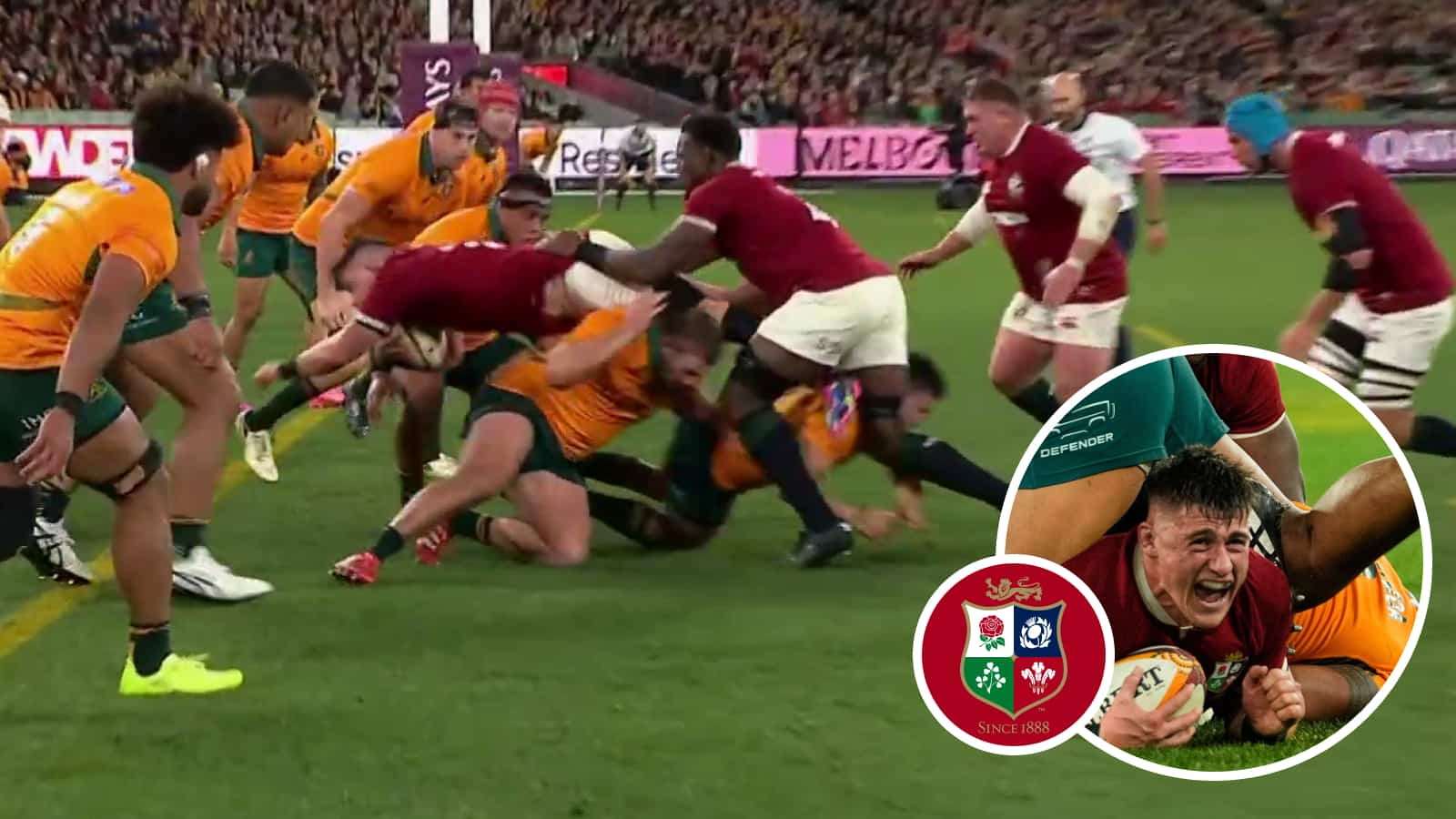Dan Sheehan’s try in the second Test match between the British and Irish Lions and Australia has already caused a stir online over the legality of his actions.
The Lions had a penalty five metres from the Wallabies’ try-line and despite being 6-0 down after two Tom Lynagh penalties, Andy Farrell’s charges opted for a tap and go rather than a shot at goal.
From the penalty, Sheehan takes the tap and dives over the tackle of his opposite number, Dave Porecki, with Wallabies captain Harry Wilson immediately pleading his case with referee Andrea Piardi.
World Rugby clarification
The Italian referee stuck by his decision that a try had been scored, but was that the right call?
In 2022, World Rugby issued a law clarification on a similar incident when New Zealand Rugby sought clarity after Chiefs number eight Pita Gus Sowakula hurdled over Aaron Smith, avoiding a tackle before scoring.
This was after England winger Jonny May scored a try during the 2021 Six Nations by leaping over an attempted tackle in the act of scoring.
In the clarification provided, the following laws were raised:
– Law 9.17: “A player must not tackle, charge, pull, push or grasp an opponent whose feet are off the ground”.
– Law 9.11: “Players must not do anything that is dangerous to others including leading with elbow or forearm”.
– Law 9.7: “A player must not intentionally infringe any law of the game”.
New Zealand Rugby raised the following questions:
Q.1 When a player hurdles/jumps over a tackler who is attempting to make a low legal tackle, this stops the defender from being able to tackle the ball carrier (as the ball carrier is now in the air and not able to be tackled). This seems unfair and against law 9.7 “unfair play”.
NZ Rugby wants to know is this legal or illegal, unfair play or unfair and dangerous play?
Q.2 In 2021, Jonny May scored by leaping/diving over a covering tackler and scoring in the corner. His dive/leap and twist allowed him to score directly in one movement. NZ Rugby wants to know if this is legal/illegal, unfair play or unfair and dangerous play.
In response to question one, World Rugby replied: “We agree – jumping to hurdle a potential tackler is dangerous play, as is the act of a ball carrier jumping into a tackle. Even if no contact is made, we believe this act is in clear contravention of law 9.11, and runs contrary to the game-wide focus on player welfare. In this specific case the sanction should be a PK [Penalty Kick] against the ball carrier.
For question two, the governing body responded: “A ball carrier may dive with the ball in order to score a try, and we all agree that should be allowed. From an equity perspective, if they do so, a defender may attempt to make a safe and legal tackle on that player. As we have said above, jumping to avoid a tackle should be regarded as dangerous play and should be sanctioned accordingly, even if no contact is made.
“Player welfare should remain the priority deciding factor for match officials in these very rare situations. In such instances as this rare example, which involves great player skill and dexterity, match officials have to make a judgement call as to which actions have taken place. If there is any element of dangerous play, in line with the above ruling, then a try cannot be the reward.
“In principle, in a try scoring situation, if the action is deemed to be a dive forward for a try, then it should be permitted. If a player is deemed to have left the ground to avoid a tackle; or to jump, or hurdle a potential tackler, then this is dangerous play and should be sanctioned accordingly.”
Sheehan’s try
So, where does Sheehan’s actions fit in?
Our opening score tonight at the @MCG 🦁
Watch every game live on @SkySports. #Lions2025 https://t.co/GYZQ6GRFrK pic.twitter.com/lKs2vE7uhw
— British & Irish Lions (@lionsofficial) July 26, 2025
Well, on the surface, it fits more into the May example than the Sowakula one, as he is diving in the act of scoring rather than leaping to avoid a tackle.
The last paragraph of World Rugby’s clarification is where the sticking point is, as it means that it comes down to the referee’s interpretation.
The official must decide if Sheehan dives upward to avoid Porecki’s tackle or dives forward to score the try. The former is a penalty against the Lions while the latter results in a try. The optics of it aren’t aided by how low the Wallabies’ hooker goes in his tackle either. World Rugby also state that the Wallabies could well have tackled Sheehan when he did launch himself provided they did so in a safe manner.
Ultimately, the law book and the clarifications provided by World Rugby with such incidents leaves a grey area for the referee on the day to make the decision, which Piardi duly did and confidently so.
While this was an incredibly tight call, one has to remember law 6.5a, which states: “The referee is the sole judge of fact and of law during a match. The referee must apply the laws of the game fairly in every match.”
Still, considering the magnitude of the decision and the high-profile nature of the occasion, we’d expect World Rugby to issue a clarification in the coming days and perhaps even a law tweak in the future to give the officials more authority with incidents of this nature.
Particularly considering the fact that Wales also had a try ruled out during the Six Nations with Blair Murray hurdling a tackler before in the build-up to the score.

